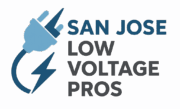Is Low Voltage AC or DC?
Introduction
When it comes to electrical systems, low voltage is one of the most common yet misunderstood terms. People often ask: “Is low voltage AC or DC?” The short answer: it can be both.
The classification of low voltage depends on the type of current (alternating current or direct current), the application, and international standards like those set by the IEC (International Electrotechnical Commission) and NFPA (National Fire Protection Association).
This article provides a comprehensive explanation of whether low voltage is AC or DC, how standards define it, its uses in everyday life, and the safety implications of working with these systems.
At San Jose Low Voltage Pros, we specialize in all aspects of low voltage wiring and installation.
Table of Contents
- What is Low Voltage?
- Is Low Voltage AC or DC?
- Standards Defining Low Voltage AC and DC
- Examples of Low Voltage AC Systems
- Examples of Low Voltage DC Systems
- Comparing Low Voltage AC and DC
- Safety Risks and Precautions
- Common Misconceptions
- Future of Low Voltage Systems
- Conclusion
- FAQs
What is Low Voltage?
Low voltage refers to an electrical potential that falls within a defined range lower than high-voltage power transmission but still strong enough to power homes, businesses, and devices.
According to IEC 60038:
- Low Voltage (LV): 50–1,000V AC or 120–1,500V DC
- Extra-Low Voltage (ELV): Below 50V AC or 120V DC
- High Voltage (HV): Above 1,000V AC or 1,500V DC
This means that both AC and DC systems can fall under the category of low voltage.
Is Low Voltage AC or DC?
The simple answer: Low voltage can be both AC and DC.
- AC (Alternating Current): Most residential and commercial electrical systems operate on low-voltage AC, such as 120V or 240V.
- DC (Direct Current): Many electronics, batteries, and renewable energy systems operate on low-voltage DC, often ranging from 5V to 48V.
👉 The classification is not about AC vs. DC—it’s about whether the voltage level falls within the low-voltage range.
Standards Defining Low Voltage AC and DC
Different organizations regulate low-voltage systems:
- IEC (International Electrotechnical Commission): Defines LV as up to 1,000V AC or 1,500V DC.
- NFPA (National Electrical Code, USA): Regulates low-voltage wiring for buildings and safety.
- OSHA (Occupational Safety and Health Administration): Sets workplace safety standards for handling both AC and DC low voltage.
- European Union (Low Voltage Directive 2014/35/EU): Covers electrical equipment between 50–1,000V AC and 75–1,500V DC.
Examples of Low Voltage AC Systems
- Household power outlets: 120V AC (North America) and 230V AC (Europe).
- HVAC systems: Low-voltage AC control wiring (typically 24V AC).
- Lighting: Certain halogen and LED systems use 12V or 24V AC transformers.
- Doorbells and thermostats: Commonly run on 24V AC.
Examples of Low Voltage DC Systems
- Batteries: From 1.5V AA batteries to 48V DC in telecom systems.
- Solar panels: Many residential systems operate at low-voltage DC before conversion to AC.
- Electronics: Laptops (19V DC), USB-powered devices (5V DC).
- Electric vehicles (EVs): Auxiliary systems often run on 12V or 48V DC.
- Telecommunications and networking: 48V DC power supplies are standard in data centers.
If you’re dealing with inconsistent current, understanding whether your system uses AC or DC is important, but you’ll also want to know how to fix low voltage in a house.
Comparing Low Voltage AC and DC
| Feature | Low Voltage AC | Low Voltage DC |
|---|---|---|
| Common Range | 120V, 240V, 24V | 5V, 12V, 48V |
| Typical Use | Homes, offices, appliances, HVAC | Electronics, batteries, solar, EVs |
| Transmission | Easier over long distances | Best for short-range or stored energy |
| Conversion | Often requires rectifiers to DC | Requires inverters for AC use |
| Safety | Still dangerous if mishandled | Safer at extra-low levels, but not risk-free |
Safety Risks and Precautions
Even though called “low voltage,” both AC and DC can be dangerous:
- Electric shock: 120V AC can be fatal under certain conditions.
- Fire hazards: Poorly installed low-voltage wiring can overheat.
- Arc flash risk: Though higher in HV, LV circuits can still produce arcs.
Precautions include:
- Use proper PPE (personal protective equipment).
- Follow NEC and OSHA standards.
- Install ground-fault circuit interrupters (GFCIs).
- Hire licensed professionals for installation.
Common Misconceptions
- “Low voltage means safe voltage.” → False. It can still kill under the right conditions.
- “Low voltage only refers to DC.” → False. Standards define both AC and DC ranges.
- “USB devices are completely safe.” → False. While safer, mishandled power supplies can still cause fires.
Future of Low Voltage Systems
Low voltage is becoming even more critical in the shift toward energy-efficient and renewable technologies:
- Smart homes and IoT devices: Growing demand for low-voltage DC power.
- Solar energy systems: Operating at LV DC before converting to AC.
- EV infrastructure: 48V systems are becoming an automotive standard.
- Microgrids: Increasing use of low-voltage DC distribution for efficiency.
Experts predict a hybrid future where low-voltage AC and DC systems work together seamlessly in homes, businesses, and transportation.
Both AC and DC low voltage systems can pose challenges, and in some cases, even hazards. Learn more about the risks of low voltage before making decisions about your wiring setup.
Conclusion
So, is low voltage AC or DC? The answer is both.
Low voltage is a classification of voltage levels, not current type. Whether it’s AC for homes and offices or DC for electronics and renewable systems, both fall under the umbrella of low voltage depending on the voltage range.
The important takeaway: low voltage doesn’t mean no risk. Both AC and DC low-voltage systems must be treated with proper safety measures to prevent accidents.
